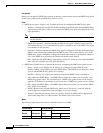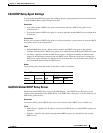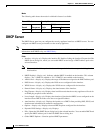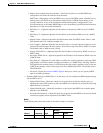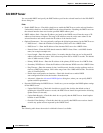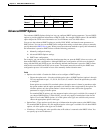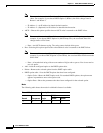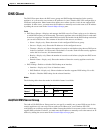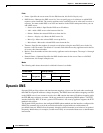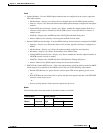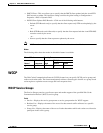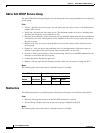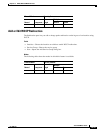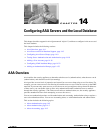
13-10
Cisco ASDM User Guide
OL-16647-01
Chapter 13 DHCP, DNS and WCCP Services
Dynamic DNS
Fields
• Name—Specifies the server name. For the Edit function, this field is Display only.
• DNS Servers—Manages the DNS server list. You can specify up to six addresses to which DNS
requests can be forwarded. The security appliance tries each DNS server in order until it receives a
response. You must enable DNS on at least one interface in the DNS Lookup area before you can
add a DNS server.
–
Server to be Added—Specifies the DNS server IP address.
–
Add—Adds a DNS server to the bottom of the list.
–
Delete—Deletes the selected DNS server from the list.
–
Servers—Display only. Shows the DNS server list.
–
Move Up—Moves the selected DNS server up the list.
–
Move down—Moves the selected DNS server down the list.
• Timeout—Specifies the number of seconds to wait before trying the next DNS server in the list,
between 1 and 30 seconds. The default is 2 seconds. Each time the security appliance retries the list
of servers, this timeout doubles.
• Retries—Sets the number of times the security appliance retries the request. The range is 1 through
10 retries.
• Domain Name—(Optional) Specifies the DNS domain name for the server. Enter a valid DNS
domain name; for example example.com.
Modes
The following table shows the modes in which this feature is available:
Dynamic DNS
Dynamic DNS provides address and domain name mappings so hosts can find each other even though
their DHCP-assigned IP addresses change frequently. The DDNS name and address mappings are held
on the DHCP server in two resource records: the A RR contains the name to IP address mapping while
the PTR RR maps addresses to names. Of the two methods for performing DDNS updates—the IETF
standard defined by RFC 2136 and a generic HTTP method—the security appliance supports the IETF
method in this release.
The Dynamic DNS pane shows the configured DDNS update methods and the interfaces configured for
DDNS. By automatically records the association between assigned addresses and hostnames at
pre-defined intervals, DDNS allows frequently changing address-hostname associations to be updated
frequently. Mobile hosts, for example, can then move freely on a network without user or administrator
intervention.
Firewall Mode Security Context
Routed Transparent Single
Multiple
Context System
• • • •—



